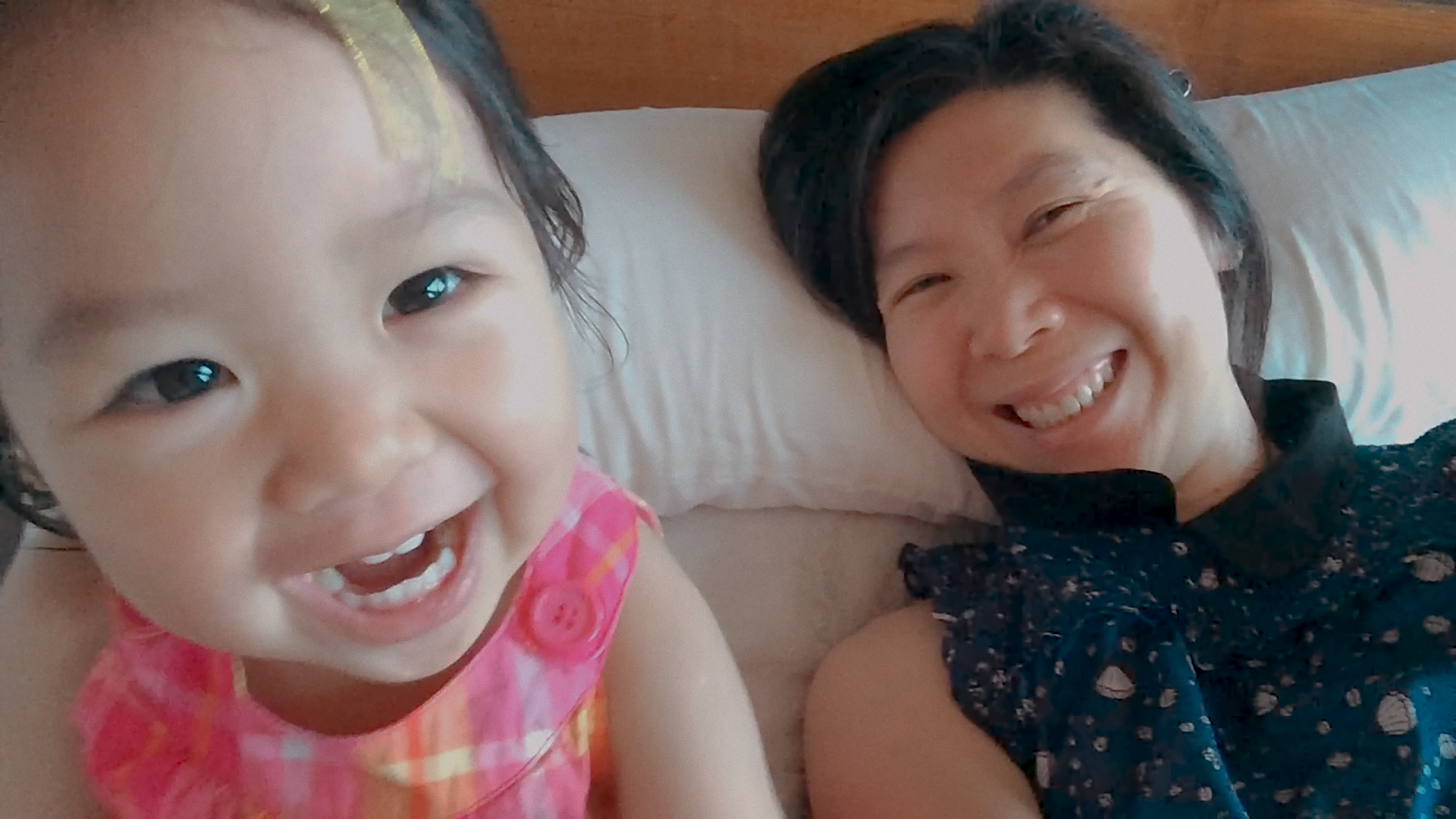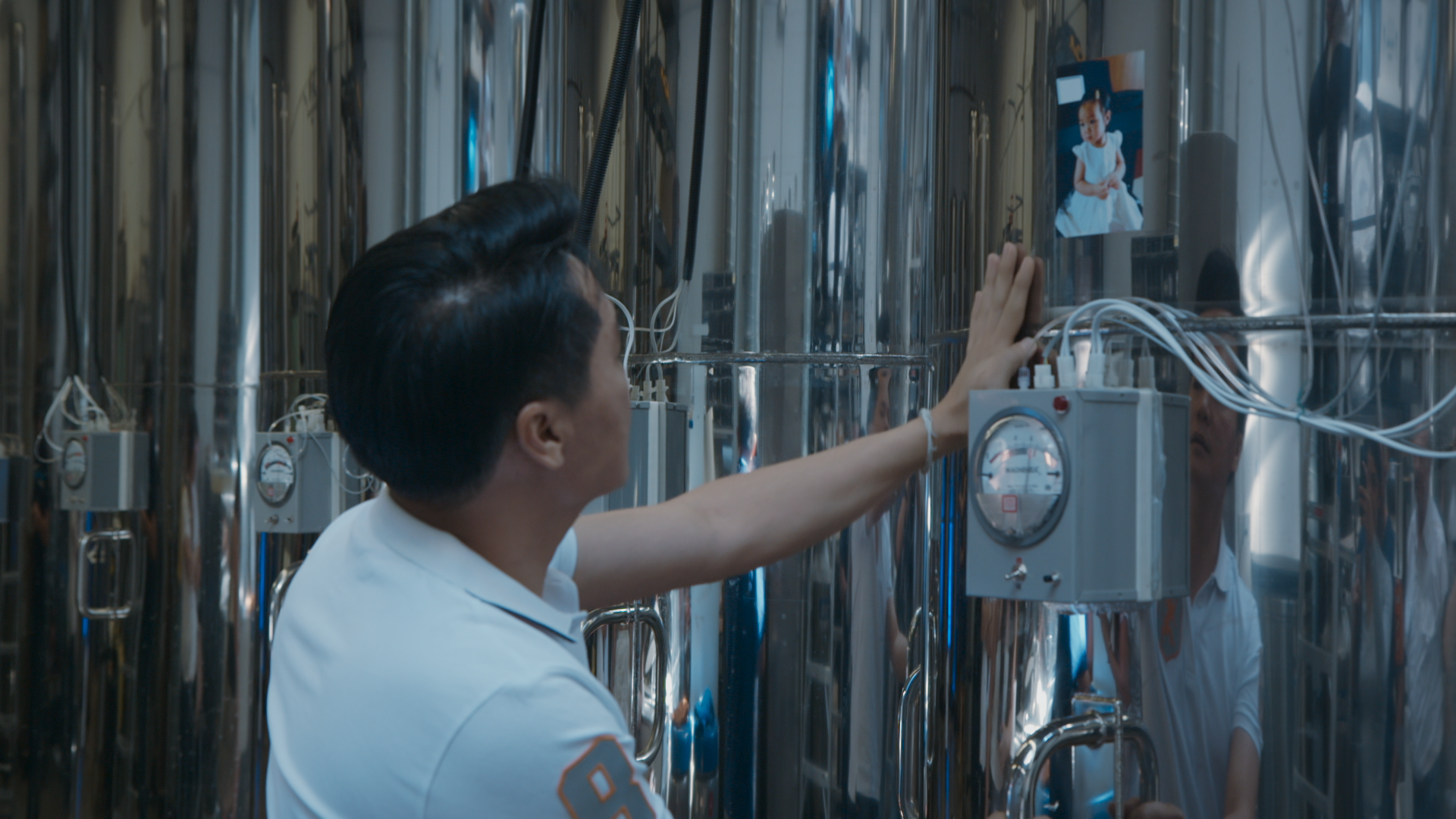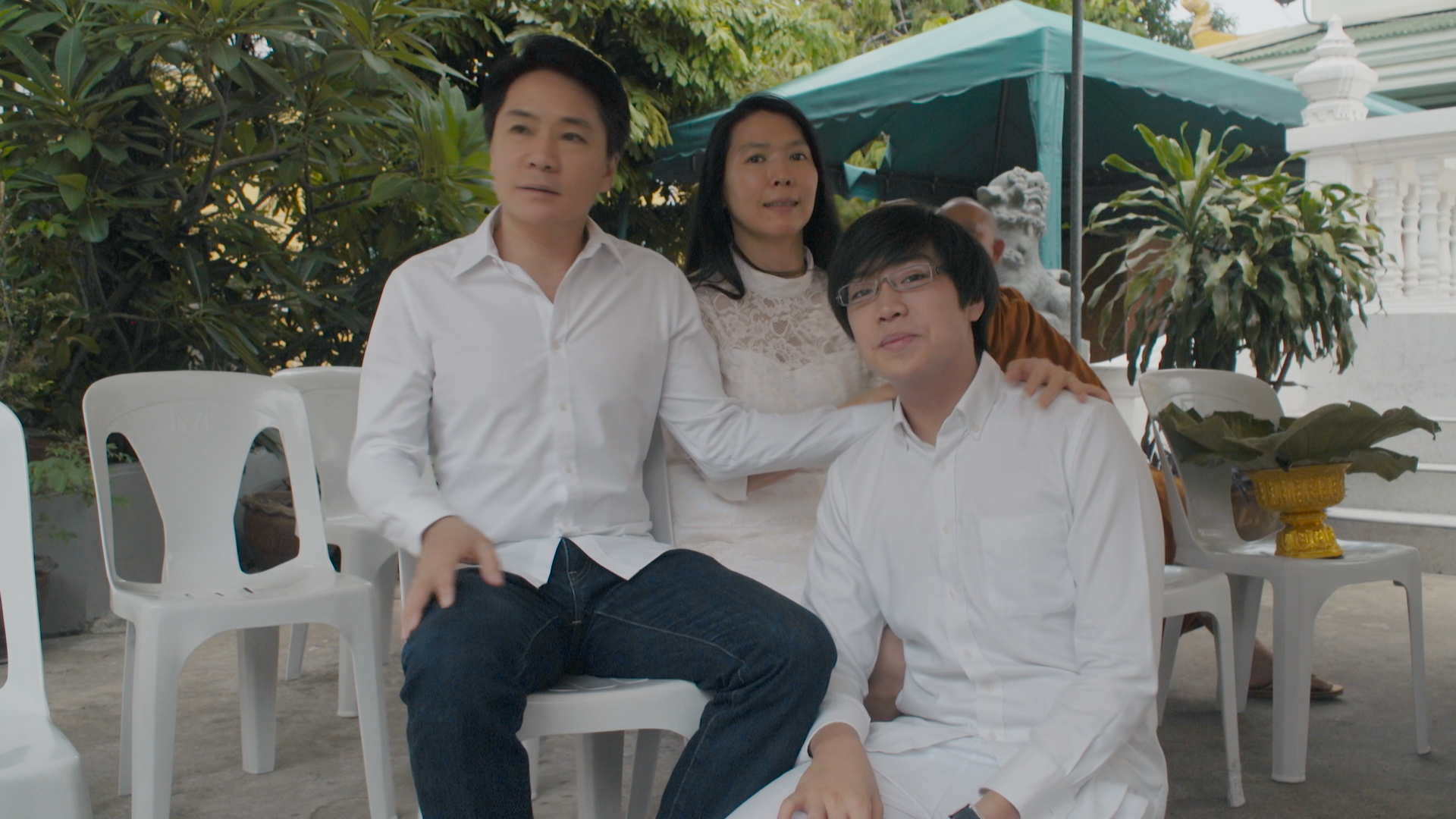Five years ago, a 2-year-old girl from Bangkok nicknamed “Einz” died of a rare but lethal form of brain cancer. Against all odds and struggling with the unimaginable pain of losing a child, her family decided to put her in liquid nitrogen cryo-preservation with a United States-based company. They hope that one day she might be brought back.
The story became a media sensation not long after VICE Motherboard published a piece about the development, and the family — especially the father, a Thai laser scientist named Sahatorn Naovaratpong — faced tough questions in the Buddhist-majority country over the ethical and religious implications of the project.
Thai-American journalist and filmmaker Pailin Wedel wanted to go deeper, and so began the making of Hope Frozen: A Quest to Live Twice, which was released on Netflix on Tuesday, Sept.15. VICE News interviewed Wedel about the making of the film, the interplay of Buddhism and futurism, and how the story’s themes may help bring people together.
VICE: How did you first find out about this story?
Pailin Wedel: It’s 2015. And Patrick, my husband, saw that their story went viral. He's a journalist too. He wanted to do a news story on them and invited me along. His Thai is fluent, but he felt like maybe some of the technical terms might be over his head. And so I went, and I was reluctant because I thought, oh gosh, this family, you know, maybe they've been exploited? Or do they really believe this is gonna happen? And then when I met them, I realized they [the parents] both have PhDs and they talk so deeply about how technology is redefining death for them. And their faith in Buddhism and their faith in science and the love in the family is just so strong and very touching. There were giant portraits of Einz in the family living room [her remains had been frozen and shipped to a facility in the U.S. state of Arizona by then]. We were very fortunate because the family kept so much family footage. After spending more than a year with them, they trusted me enough to hand over a drive with everything they had. What you see in the film is what I thought were some of the best moments.
Did you worry about having the space to tell the story since it was such a media frenzy at the time?
Not really. Because, I mean, everyone was interested in the headlines. But there were so few people that really had the stamina to gain their trust and spend the time needed to really do their story right in a documentary way. This is my first feature-length film. All the films that I've done before this are more reportage. And I'm on camera often, and I'm reporting an investigative story. But I always wanted to do much more character-driven stories.
There were a lot of challenges. But, you know, everything's kind of an accident. I started off as a stills photographer at a newspaper. And I was telling entire stories with one frame. And then I taught myself video and then started doing 90-second stories. And then I started doing more feature-y stories that are three to four minutes, and then I did [the Aljazeera show] 101 East, they were 25 minutes. And this is 78 minutes. So it really does seem like a natural progression. But in the moment, I just wanted to do what I wanted to do. It wasn't this grand plan that I wanted to one day do a feature-length documentary. I had some idea that at some point in the future, maybe I wanted to do something longer. But I think for me, I try and look at the story and see what it warrants. And that's what you can do as a freelancer, you know, say, “Hey, this is a great story, I think this would be like 20 minutes or 30 minutes,” or whatever, and then pitch it to the outlets with those formats. So that's always how I operated, looking at the story first and seeing how much it warranted.
When did it click that this one was going to be different?
I thought it was going to be a 20-minute story for National Geographic, maybe 10 minutes or maybe two episodes, something like that. And then I was like, you know what, I think there's more here, and it kind of just progressed. So there wasn't one specific moment, it was just more like the desire to do more that kept me going. But that said, I think it was after a year that I thought, if I had enough funding, that this could really be something that is beyond television-length slots. I thought this could be more poetic than what news channels want me to do.

What was the process of filming like? You spent a lot of time with the family. It seemed very intimate, like when you recorded FaceTime chats.
It’s a process. We started off as strangers. It’s not like I knew the family before. So it's about gaining trust through being really transparent. Every time I applied for funding or anytime I wanted to do a scene, I told them about my process. This is what I'm thinking, why this scene is important. So the process isn't mysterious to them. And just through being transparent and just showing up a lot, they opened up their home to me. It's time, perseverance, and sensing that if they weren't ready for me or didn't want me to film certain things, that I needed to back off, or just work at it again.
What part of Einz was actually preserved?
The anatomy of what happened can really freak people out. And I didn’t want to focus on the gruesome aspects of this. But yes, it is her head, and the reason why it's her head is because your head is the best container for your brain. And that's the most important part. That's where, a lot of neuroscientists agree, your memories and your personality lives.
She’s been in this facility in Scottsdale, Arizona this whole time?
She’s still there. I was there on the family’s first time ever visiting her. And that was just a few months after she was shipped. So she was shipped as a whole body. Within minutes of her death, Alcor [a company that specializes in cryonics] had a team that was on standby in Thailand and did the cryopreservation procedure, and that's basically replacing all the fluids in your body. And as soon as that happened, the family had actually designed a capsule for her that would retain the appropriate temperature her entire journey, and then shipped her off that way.

Was the family overwhelmed by the media attention? The clips in the movie show Dr. Sahatorn taking some tough questions on talk shows about the family decision.
They didn't plan for this kind of attention. But basically, they told me that in the beginning, they saw sensational headlines from people who didn't even interview them. “Father freezes daughter into Zombie,” or something like that.
And they were just appalled. And they realized they really needed to open up to the media and really just tell their story as truthfully as they can, and emphasize that everything was done out of love, no matter what people thought of them. He just spoke from his heart. And I think that's what he tried to do, to kind of combat this sensational reaction.
Their older son, a teenager at the time, is a science buff named Matrix who embraces the quest. Is that his real name or a sci-fi nickname?
That’s his real name on his passport. He told me his mom said he was named after the metric system, but then found that that way of spelling it was just cooler, so instead of Metrics, it’s just Matrix. So there’s a science reason behind it but it’s not what you think. But Matrix said that maybe she just secretly liked Keanu Reeves. The name Einz is from the Chinese and Japanese word for love. And again, to add the “z” at the end was just a cool way to spell it.
This isn’t your average documentary about Thailand. Did you set out to challenge some stereotypes about the country and what people associate with it?
I think as a journalist, especially when I'm doing pretty hard-hitting stuff, you end up doing stories about drugs, human trafficking, and human rights abuses or political turmoil. And when you do those stories — which are really important stories that I will continue to do, so I'm not saying we shouldn’t do them — you're putting out stories that I find people outside the country sort of end up thinking, Oh, those are the horrible things that happen there. They kind of other us, you know? Oh, our country's better. Nothing like that happens here. And it's not a story that connects people because it focuses on the differences between people. And I really wanted to do a story that connects, a story that is universal, and a story that shows people from Thailand that they've never seen before.
You know, when was the last time you saw a story about scientists in Thailand or even futurist thinking? People think of beaches and red-light districts and political turmoil. Those are the three things. And elephants.
I just wanted to put out somebody different, somebody who wasn't living in poverty, somebody who has the same big life and death questions we all do as human beings and have the same love for their kid. Yes, they probably made a decision that not a lot of people might make. But I think the themes are themes that connect us, that are universal. And that's definitely one of the reasons that motivated me to make this film for so long.
Thailand is predominantly Buddhist. And this family is Buddhist. One of the fascinating parts of the film were the questions and debate about the overlap of faith and cryonics.
There are a few things going on with Buddhism. They were accused of not letting go which is a principle included in Buddhism. And they were accused of trapping her soul from being reincarnated. On the not letting go part, they're very self-aware. And who in Thailand follows Buddhist precepts 100 percent of the time anyway, who in any religion? I think when you lose your child, it's fair game for however you want to do to deal with that. I don't have a right to judge. And in terms of her soul, so within Buddhism itself, there's diverse thought.
There's even some debate on what Buddha meant by reincarnation, because the theory of reincarnation is very much Hindu-influenced. So there are people who really believe that it happens in the way that you think, which is you come back as a different creature every time you die. And then there are people who really think of it as more, we are particles and we turn into particles and those particles become other particles, therefore, those particles come into being in some distant future. I think this is what’s special with Buddhism, because it doesn't have a creator. Buddha also very much encouraged his disciples to really take a look at the evidence and examine the evidence. That's what he [Dr. Sahatorn] is doing. So when I asked about reincarnation, he's like, you know, one of the things Buddhism does teach you is not to be so fixated on questions you do not have power to answer. And those are one of the questions. He’s like, ‘I don't have an answer.’ But maybe her coming back is like reincarnating. Maybe that’s one of the things that could happen.
I think after Einz died, Buddhism really helped them. I think they were always really religious, I don’t know how much. I think it helped with community, with counseling, also rituals, meditation. Sahatorn really meditates a lot. Most religions help people after grief.
What’s the state of science with cryonics?
In the film there are news stories about a rabbit brain being preserved. And for the first time ever, one scientist was able to demonstrate that the way he preserved it meant that when you brought it out, the connectome, which is like all the synapses — the patterns of your synapses that are in your brain that make who you are — those are all very much intact. No rabbit was brought back. All that was demonstrated was that the method used was an effective method in keeping data. And that was a breakthrough because before then there were very few people who could even demonstrate that freezing people resulted in good preservation.
The idea for futurists is that if you just preserve the data, then one day the data can be scanned, uploaded, recreated, and downloaded, in a cloud, in a transhuman — whatever form exists in the future. So where we are is we have no demonstration that Alcor’s technique is able to definitively preserve someone's memories and personality — a human's memory and personality — [just]because they have demonstrated certain things for worms and dogs. For humans, we don't know how well actual memories and actual personality will be preserved with the current methods.
Did making this film change you at all?
I think there's this myth out there that we make films to change ourselves. But I think what films are mostly made for is to share an experience. And the experience I had was I went in and met the family with one set of thoughts about them and judgments, like maybe they were being exploited, or maybe they didn’t know that it was very, very, very difficult to bring her back. And then, when I understood who they were, those judgments were clearly wrong. I completely underestimated them. And I think that's a lesson in the film as well. I think a lot of people who watch the film might go in having preconceived notions about what the film is about, or who this family is, and maybe come out still not agreeing with what they did, but at least have an understanding of why they did what they did.
Maybe this is too far of a reach but I think so many of us, not just in Thailand, we are in a divided world where one side thinks one thing. It’s polarized. And oftentimes, we look at people who don't think like us, and we think they're bad people, or they must be immoral, or they must be something lesser. And I think that's what I wanted to share. You might have judgments. But there's common ground we have between humans. And in this case, it's hope and love.

Is there something else you want viewers to know before plunging into the film?
People might be afraid to watch this film because they worry it would be too traumatic for them. I think they’re imagining that they’re going to see a frozen child or this horrible grief process and never-ending crying, but I hope it’s a film that has more peaks and valleys than that. There are moments when you’re laughing, there are moments when you are crying, there are moments where you are pondering big questions about life and are pensive. So there are a variety of emotions in this film. And you do not see any part of the actual preservation process. It’s much more about the journey of this family.
This interview has been edited for length and clarity.
from VICE US https://ift.tt/32wVD6Z
via cheap web hosting
No comments:
Post a Comment